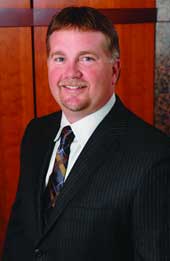Let's get flexible

CDW accentuates the positive in return to private ownership.
If CDW Corp.'s plans come to fruition, the information technology reseller will soon leave the public stock market and return to private ownership. Madison Dearborn Partners LLC and CDW announced in May that they had agreed on a $7.3 billion price for Madison Dearborn's purchase of CDW.Going public is generally considered a good development for a company, especially a young, entrepreneurial firm. However, sometimes companies find that the short-term demands of the stock market become a burden.For CDW, of Vernon Hills, Ill., and its government business unit, CDW Government, the benefits of going private include greater flexibility in allocating resources, said Jim Shanks, CDW's executive vice president."It's going to be business as usual plus one," he said. "We're going to have the opportunity, now that we're going to be a private company, to have more flexibility. When you're a public company, you have all these obligations that put a governor on how you can invest."Chicago-based Madison Dearborn has a history of investing in companies it feels are good long-term investments without needing a lot of reorganizing, Shanks said. "When you hear 'private equity,' you think of companies that want to bring their own management teams in and change directions," he said. "That is not Madison Dearborn."Government customers worried that the change might affect CDW-G should relax, Shanks said. "We understand the needs of the public sector. We don't treat them like a commercial customer."In the late 1990s, initial public offerings, or IPOs, of stock were big deals for companies. Many of the entrepreneurial firms that sprang up to capitalize on the dot-com boom envisioned going public as their preferred exit strategy, with the prospect of selling to a larger company also an attractive possibility.But even well-established companies got caught up in the IPO rush.In 1996, OAO Technology Solutions Inc. was spun out from OAO Corp., which had been founded in 1973. Two years later, the spinoff went public. In 2004, John F. Lehman Jr. and Co. led the effort to take it back to private ownership.OAO Technology's board made the decision because being publicly traded wasn't allowing the company to raise the liquid capital it needed, said Sid Fuchs, the company's chief executive officer.Many companies have gone public in recent years that probably shouldn't have, Fuchs said. In the effort to meet the 90-day revenue projections, many executives make decisions that pump up the short-term performance but work to the long-term detriment of the company, he said.In trying to reach the projected quarterly earnings per share, "if they were off by a penny, the stock would get hammered," Fuchs said. "What it made people do was focus on the near term. They would buy companies that were maybe not a goodfit but were available and would help for the next quarter. The pressure from being public and consistently providing double-digit growth" may have played a role in the financial scandals that in recent years brought down major corporations, including Enron, he said."There are a lot of companies that would never think of going public" in today's business climate, said David Rattner, OAO Technology's general counsel.Another benefit is that private companies have to disclose less information about themselves, Fuchs said. The Securities and Exchange Commission tracks a lot of information about public firms that competitors can turn to their advantage, he said. Although private firms still have to use accepted accounting principles and undergo audits, they can keep more of the information to themselves.Those disclosure requirements got even more exacting with the passage of the Public Company Accounting Reform and Investor Protection Act of 2002, better known as the Sarbanes-Oxley Act. When introduced by Sen. Paul Sarbanes (D-Md.) and Rep. Michael Oxley (R-Ohio), the bill passed both houses of Congress by substantial margins. Enacted in the aftermath of the collapse of Enron, the legislation imposes new reporting requirements on public companies."There's still a cost and a risk of being public, which every public company is aware of," said investment banker Bob Kipps, co-founder of KippsDeSanto and Co. "It's difficult to manage on a short-term, quarter-to-quarter basis. It's a long-held frustration of public companies."Sarbanes-Oxley is a new hurdle for public companies. Most private companies, however, are still accountable to shareholders if they've used private equity to leave the public market, Kipps said. But the shareholders are the principals of the investment firm, not a broader group of investors.Although the attraction of going public is not what it once was, it is still a goal for some companies. "They see that as a milestone, a notch on the belt they want to achieve," he said.Sarbanes-Oxley played a key role in RWD Technologies Inc.'s decision to go back to private status in 2003."As a public company, we were doing all the things you have to do," said Laurens "Mac" MacLure Jr., RWD's president and CEO. "We were doing the SEC filings, holding quarterly conference calls, we were having analyst meetings. We were having regular bimonthly board meetings. We were doing the quarterly shareholder reports. We thought, conservatively, that those costs were going to double because of Sarbanes-Oxley."RWD founder Robert W. Deutsch already owned 65 percent of the company's stock, but he bought up the remaining shares to regain ownership of the company, MacLure said.The company dissolved its external board of directors but kept an internal one. RWD, which had been losing money, returned to profitability in the span of a quarter, he said."We were able to focus on running the business," MacLure said. "We went from a quarter-to-quarter financial focus to a long-term focus. We eliminated $2 million in costs. And most importantly, we were able to restructure our business outside of the public spotlight, which we desperately needed to do."That restructuring included some hard decisions, he said. The company slashed its employee rolls almost in half, from 1,100 people to 650. Since then, the head count has risen again, to about 1,050.Overall, MacLure said, private ownership is a better arrangement for RWD, and he doesn't see a situation in which it would make more sense to return to the public markets."It's definitely an advantage to be able to think and act with more of a long-term horizon," he said. "We no longer have to hang our laundry out to dry. We can make investments that will decrease our earnings today" but yield long-term gains.In short, he said, "we can run the business the way we think we should and not have to worry about how investors and analysts think we're doing."

IPO frenzy
Long-term focus
Associate Editor Michael Hardy can be reached at mhardy@1105govinfo.com.

"When you're a public company, you have all these obligations that put a governor on how you can invest." ? Jim Shanks, CDW Government
IPO frenzy
Long-term focus
Associate Editor Michael Hardy can be reached at mhardy@1105govinfo.com.
NEXT STORY: Productivity by the dashboard light

